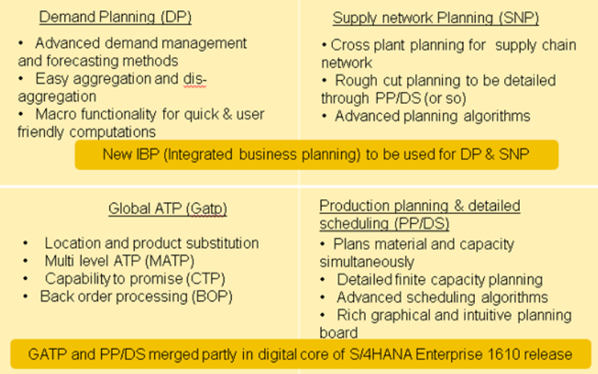TAKE NOTE (Insights into Emerging Technology)
Here are four reasons you should be in Orlando June 5–7.

Time To Modernize
There’s been more innovation in the last five years than in the last 100. A vast array of game-changing technologies such as artificial intelligence, machine learning, blockchain, and intelligent Cloud ERP are redefining business models and creating a chasm between old and new. Incremental improvements and the status quo won’t cut it in the new economy.
Disruptive Innovation
There’s an exciting new generation of technologies, and their impact on your organization will be profound. Through the SAP Design Thinking workshops at SAPPHIRE NOW and ASUG Annual Conference in 2018, you’ll see how industry accelerators can help you create new business models in a matter of months. And you’ll learn how the SAP Leonardo digital innovation system – with technologies like machine learning, blockchain, IoT, and more are rolled into one incredibly powerful solution that can deliver transformative business outcomes.
SAP HANA
Suite on HANA (SoH), S/4 HANA, Cloud, Security, Licensing… we all have HANA questions and concerns. Look, SAP HANA is the most powerful in-memory computing platform ever developed. You can get your questions answered and you’ll see how the SAP Cloud Platform can be your ticket to a rapid start on the path to innovation in the cloud
Learn, learn, learn
Understanding the technology you use every day is critical to helping your company run at its best. You’ll find valuable resources to help you do your job better, including a full day of ASUG pre-conference seminars, hundreds of education sessions, SAP road map presentations, and influence workshops – all taking place in the ASUG Education Zone and in the ASUG Hub. It’s where you’ll connect with SAP customers and product experts, and find answers to your questions.
There are a lot more reasons, but these four are my top. Business technology is exploding and this is the place to see it, experience it, and chart your future in SAP. You can Register Here.
Enrich Your Onsite Experience with the Mobile App
UNDER DEVELOPMENT (Insights into Emerging Technology)
What Makes Pega iBPM Best In Class

Before delving into the reasons that Pega surpasses any other intelligent business process management (iBPM) suite, let’s review what iBPM is. iBPM enables your organization to adjust its internal operations with customer needs, and it provides assistance to management to make better decisions on how to monitor, direct, and measure resources. When executed properly, iBPM can enhance efficiency, reduce expenses, promote greater productivity, and mitigate risk and errors. Adopting best practices in iBPM can lead to sound financial management and produce better feedback on organizational goals.
Several key objectives and benefits of iBPM include:
- Greater reliability
- Increased accountability
- Simplified regulatory compliance
- Reduction in waste
- Protection of organizational data and resources
- Safer working conditions
- Greater knowledge sharing and collaboration
You can also take a look at our previous post BPM – A 5 Minute Tutorial for an overview and a look at the two top vendors, one of which is Pegasystems…
What is PEGA Robotics Process Automation (RPA)
Pega Robotic Automation allows you to create automations using Microsoft Visual Studio, Runtime/Agile Desktop, and a cloud-based deployment tool. With this feature, you can develop and implement these robotic automations:
Pega Robotic Process Automation (RPA) is the application of technology that facilitate employees in a Organization to configure computer software or a “robot” to execute on a huge range of repetitive task and interpret existing applications for processing a transaction, modifying data, triggering responses and communicating with other systems just like humans do. Robots when compared to humans the better part is a robot never sleeps, makes zero mistakes and costs a lot less than an employee.
Pega Robotic Desktop Automation (RDA), lets you automate business transactions and processes by allowing you to devise personal robots that can collaborate through Runtime client desktops. As an example, for a service organization, your service representative can focus on the client while the robot collects the data the representative needs for exceptional service.
Organizations using RDA and RPA are realizing a more rapidly and better return on investment when both are leveraged in the transformation journey. The objective of robotic automation is an improved customer experience and operational excellence through amplified competency, performance, and agility in the day-to-day activities across the enterprise.
Exceptional iBPM Software
The core of Pega is its Pega RULES Process Commander, which enjoys a deserved reputation as an exceptional software. It’s highly sophisticated programming easily streamlines large, complex, multi-year projects. Lloyds Banking Group used the software to minimize customer complaints, and Cisco used Pega to centralize its operational processes. Indeed, one of Pega’s best features is its ability to launch and implement quickly regardless of the size or objectives of the project.
Q&A (Post your questions and get the answers you need)

Q. Does SAP IBP replace APO?
A. SAP has now released an OSS note 2456834 – Transition Guide for SAP APO stating that “SAP APO is partially succeeded by two products: SAP S/4 HANA and SAP Integrated Business Planning (SAP IBP)”.
APO has mainly 4 sub-modules – DP. SNP. GATP and PPDS. Below figure shows the high-level functionalities of each sub-module and SAP’s roadmap for these functionalities to the successor products. DP and SNP will be succeeded by IBP, GATP & PPDS will be succeeded by similar functionalities in S/4HANA.

IBP is a cloud application and AATP is a new name for functionalities of GATP in S/4HANA. Architecture, configurations, user interface for IBP and AATP are very different. Hence, transition to successor products should be through new configurations i.e existing APO configurations can not be reused for IBP and AATP in S/4HANA. SAP has also clearly stated in the note that “An automated migration from SAP APO to the successor products is not possible“.
It is also now apparent that the future SAP landscape for customers using APO DP and SNP will need to be Hybrid i.e a mix of On-premise (Core ERP or S/4HANA) and Cloud (IBP).
IBP has been around a few years and many customers have started using it or migrated to it. PPDS has been merged in 1610 release of S/4HANA.Some parts of APO GATP have been made available in 1610 release of S/4HANA and SAP has also provided a road map for AATP.
As of now, APO functionalities are partially available in its successor products S/4HANA and IBP. We need to wait and watch when APO can be fully migrated to S/4HANA and IBP. However, it is very clear now that SAP is recommending to plan for transition from APO to its successor products IBP and S/4HANA

